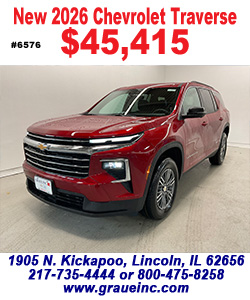Trump administration says it’s withholding social safety net money from
5 states over fraud concerns
[January 07, 2026]
By GEOFF MULVIHILL, MORIAH BALINGIT and HALLIE GOLDEN
President Donald Trump’s administration said Tuesday that it is
withholding funding for programs that support needy families with
children in five Democratic-led states over concerns about fraud.
The U.S. Department of Health and Human Services, which oversees the
program, will require the states to provide extra documentation to
access the funds.
“Families who rely on child care and family assistance programs deserve
confidence that these resources are used lawfully and for their intended
purpose,” HHS Deputy Secretary Jim O’Neill said in a statement.
The administration has not laid out details about the fraud allegations.
HHS said in a statement evening that it “identified concerns that these
benefits intended for American citizens and lawful residents may have
been improperly provided to individuals who are not eligible under
federal law.”
Five states — California, Colorado, Illinois, Minnesota and New York —
are targeted, and the HHS said they had been notified.
Gov. Kathy Hochul said earlier in the day that New York is prepared to
take the administration to court, as Democratic-led states have done
scores of times now.

“We’ll fight this with every fiber of our being, because our kids should
not be political pawns in a fight that Donald Trump seems to have with
blue state governors,” she said.
The plan to withhold the funds was first reported by the New York Post.
Programs aim to help needy children and their families
The targeted programs provide lifelines to some of the neediest
Americans:
— The Child Care and Development Fund subsidizes day care for low-income
households, enabling parents to work or go to school.
— Temporary Assistance for Needy Families provides cash assistance and
job training so parents in poverty can afford diapers and clothes and
earn paychecks.
— The Social Services Block Grant, a much smaller fund, supports several
different social service programs.
“These resources support families in need and help them access food and
much more. If true, it would be awful to see the federal government
targeting the most needy families and children this way,” Colorado Gov.
Jared Polis' office said in a statement.
Trump himself has not spoken on the specifics, but he proclaimed on
social media Tuesday: “The Fraud Investigation of California has begun.”

[to top of second column]
|

Children watch television at ABC Learning Center in Minneapolis,
Minn., on Wednesday, Dec. 31, 2025. (AP Photo/Mark Vancleave)

Tara Gallegos, a spokesperson for California Gov. Gavin Newsom, said
via email that “Donald Trump is a deranged, habitual liar whose
relationship with reality ended years ago.” She also defended
California’s record on stamping out fraud in government programs.
New York Democratic Sen. Kirsten Gillibrand said Trump’s move to
halt funding aims to score political points, not to stop fraud.
“It’s our job to serve the people most in need and most at risk — no
matter what state they live in or what political party their family
or elected representatives belong to,” she said in a statement. “To
use the power of the government to harm the neediest Americans is
immoral and indefensible.”
Trump administration amplifies fraud claims
For months the has claimed that federally funded programs are being
defrauded and used that assertion as a rationale to hold up money.
Federal child care funding has been on hold in Minnesota since late
last month amid investigations into a series of alleged fraud
schemes at day care centers run by people with family roots in
Somalia.
In the fallout, HHS officials said no state will receive child care
funds without providing more verification. Several states have told
The Associated Press that they have not received any guidance on
that decision.
The administration also raised fraud claims involving SNAP, the
country’s main food aid program, saying it would halt administrative
money to states — most Democratic-run ones — unless they provide
requested details on recipients. That process could take months.

The administration has said the information provided by most
GOP-controlled states shows fraud may be worse than previously
believed, though it has not provided the data or detailed reports.
Dr. Mehmet Oz, the administrator of the Centers for Medicare and
Medicaid Services, told Fox News on Tuesday that his agency also
plans to audit Minnesota’s Medicaid bills in search of potential
fraud. He did not provide any evidence of fraud that had been found.
___
Associated Press journalists Anthony Izaguirre, Steve Karnowski,
Trân Nguyễn, Todd Richmond, Colleen Slevin, Darlene Superville and
Sophie Tareen contributed.
All contents © copyright 2026 Associated Press. All rights reserved |